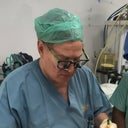Posted underBreast Implant Revision q&a
What is the best technique to fix my symmastia problem? (Photo)
Based on my picture which technique can be used to fix my problem? I was searching about symmastia and some doctors use a mesh (internal bra), galaflex with smaller implants to fix this type of problem. Is that good plan to follow? Will I get permanent results using this internal bra? I am really sad about my results.
Answers (10)
From board-certified doctors and trusted medical professionals
Dr. Frederic H. Corbin, MD (license restricted)
Board Certified Plastic Surgeon
Answer
More Breast Implant Revision Questions
See all Breast Implant Revision Q&AWE SEND PRETTY
EMAILS
What’s trending? Who’s turning heads? Which TikTok myths need busting? We’ve got you. No fluff, no gatekeeping—just real talk. Get our free, unfiltered newsletter.






